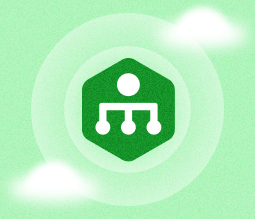What SNMP Is
The Simple Network Management Protocol (SNMP) is used to monitor the data of devices on a network. With its help, you can collect data about your equipment in order to prevent any issues with devices.
SNMP was developed in the 80s and has become popular among protocols. Some vendors built SNMP into the equipment they produced, so IT admins had a consistent way to collect valuable data from their devices. It is still relevant and actively used today, although other popular protocols have been developed.
How SNMP Monitoring Works
The SNMP agent installed on network equipment collects information related to various changes and determines the state of the devices connected to it. SNMP manager collects this data by querying an SNMP agent. Gathering this data helps IT professionals keep abreast of all the processes on devices on the network.
Components of SNMP Monitoring
SNMP monitoring consists of the following components:
SNMP Agent
The SNMP agent is installed on the monitored device and is a small application that stores information about the device and sends it to a remote location when it is polled.
Managed Device
A device on which an SNMP agent is installed is called a “managed device”. For example, routers, access servers, switches, hubs, and printers are defined as devices that you can monitor via SNMP.
SNMP Manager
The SNMP manager requests data from the SNMP agent installed on the managed device.
Management Information Base (MIB)
Management Information Base is a structured text file that an agent provides to a manager. The SNMP manager takes data from the MIB to interpret and send it to the end user.
SNMP Protocol Versions
The first SNMP version, issued in the 80s, is called SNMP v1 and is known as a version with a low level of security and without encryption. It was created to support 32-bit counters, so after reaching the 32-bit limit (approximately 4.3 billion bytes), the counter resets, and you lose all the device information you had previously collected.
SNMP v2 was created in the 90s and is an improved version of SNMP v1. Its level of security is much higher, despite the fact that it does not include encryption either. However, the performance of SNMP v2 is much improved by adding support for 64-bit counters and new ways to get large amounts of data.
SNMP v3 was released in the early 2000s and is the most secure and recommended version. It requires a username and password to retrieve device data, plus data encryption has been added.
SNMP Monitoring with MSP360 RMM (Beta)
With MSP360 RMM, you can scan and list devices on a local network using all three protocols – SNMP v1, SNMP v2, and SNMP v3.
To discover devices on the network, go to the MSP360 Management Console, select RMM > Computers from the top menu, and click the diagram icon next to the desired computer.
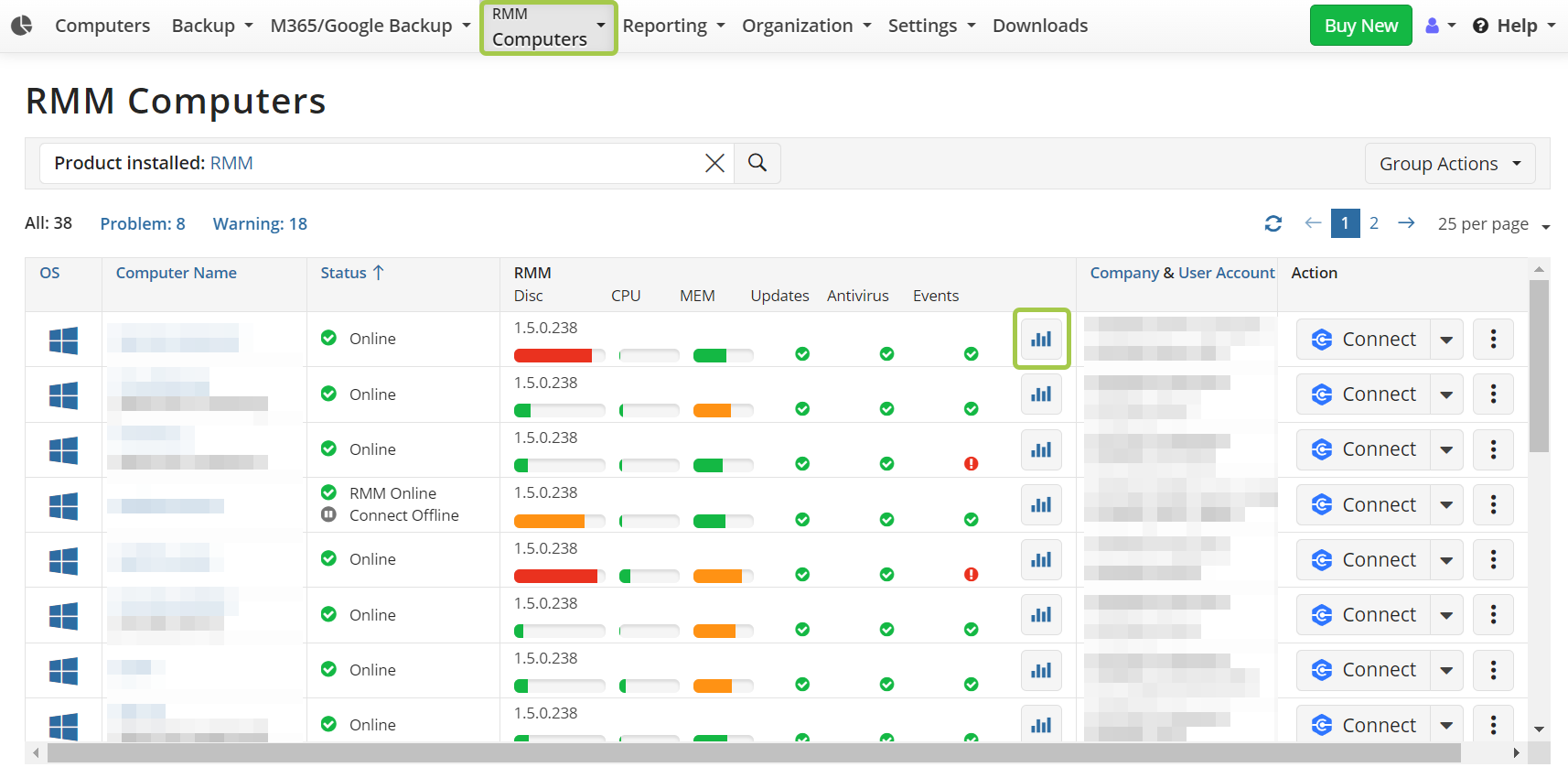
In the sidebar that opens, find and click SNMP (Beta).
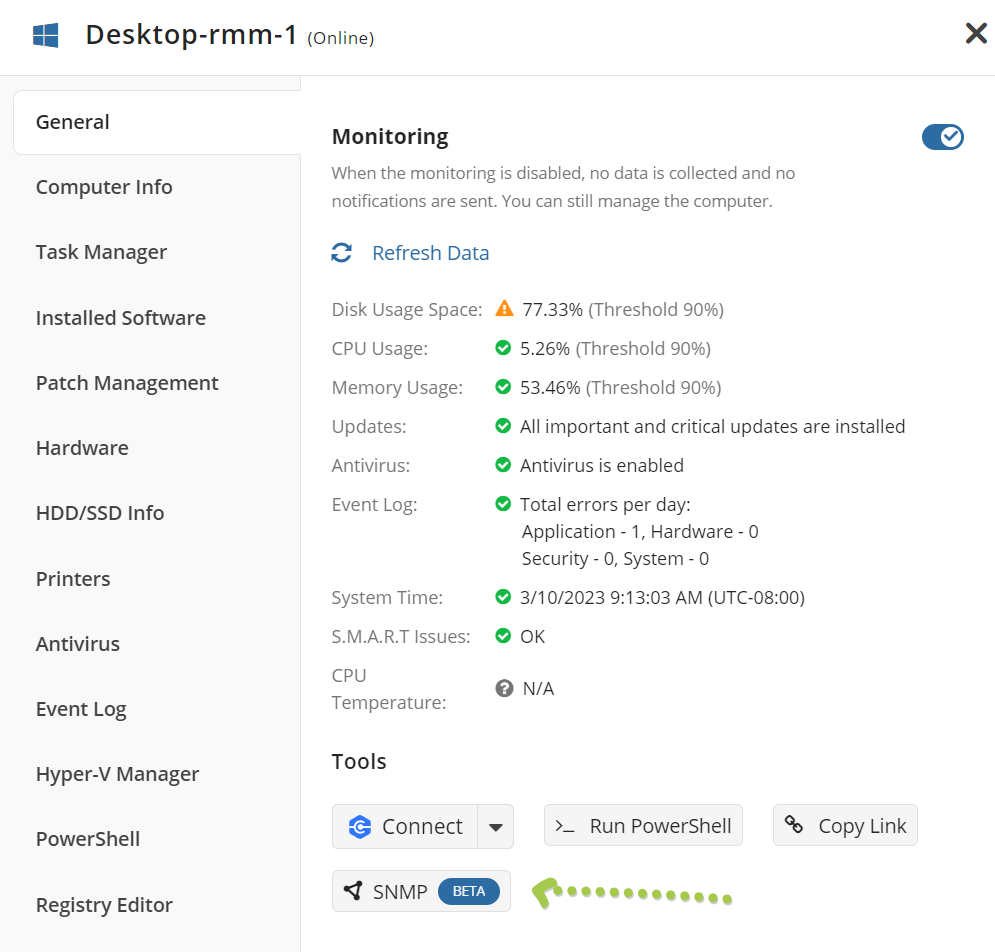
The SNMP menu will open. Here, click Discover New Devices.

That’s it! When the search is complete, new devices will appear in the list.
You can also view device details – just click on the three dots in front of the desired device and then choose Details.
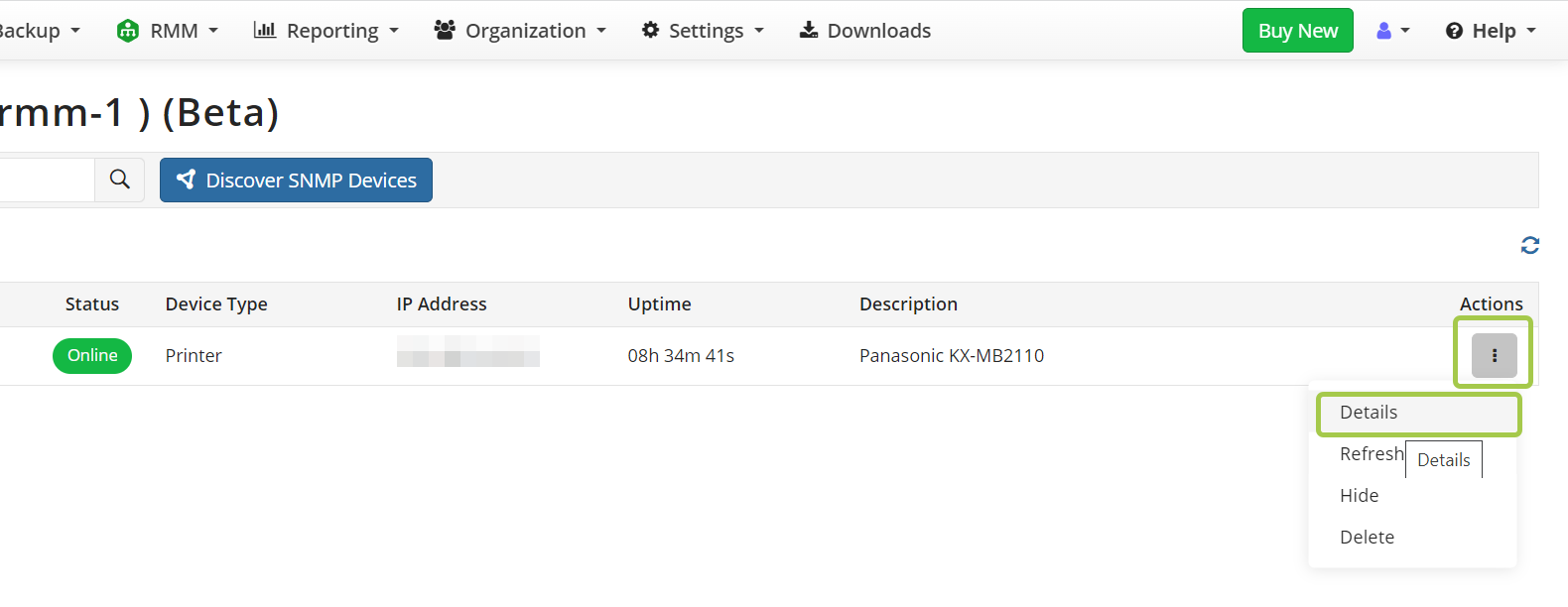
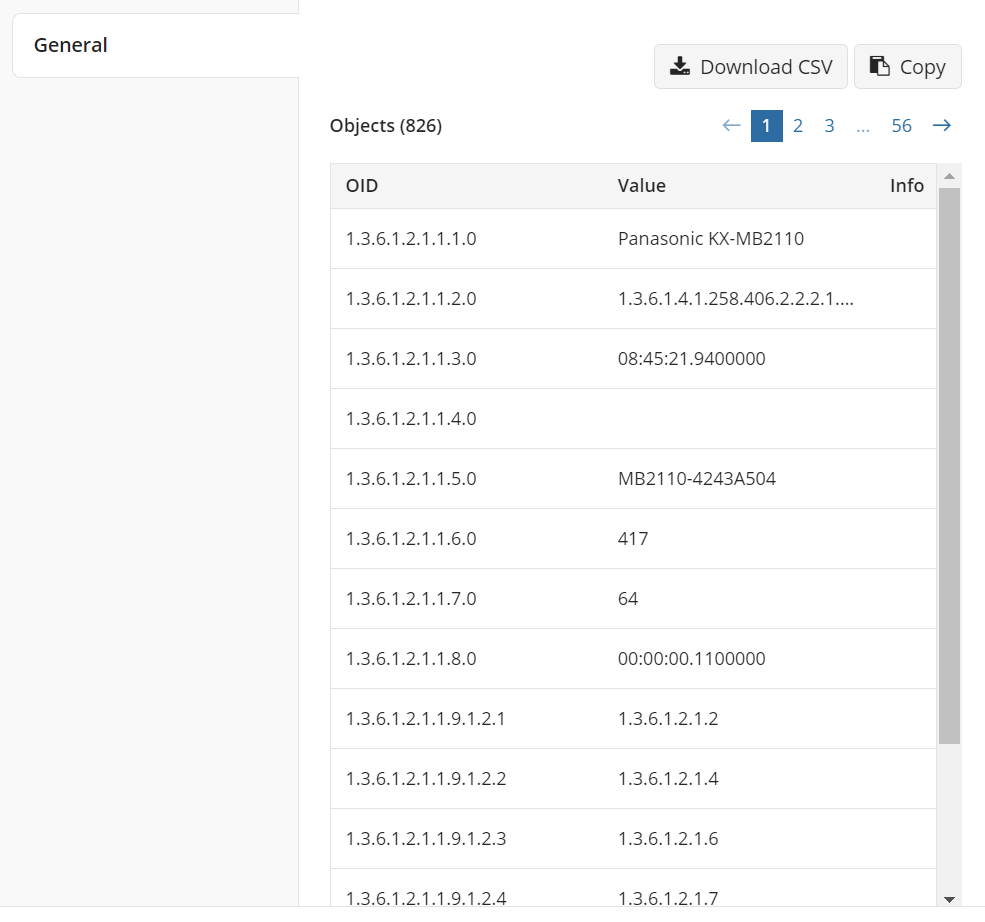
Read our help article about SNMP Device Monitoring with MSP360 RMM if you want to learn more.

